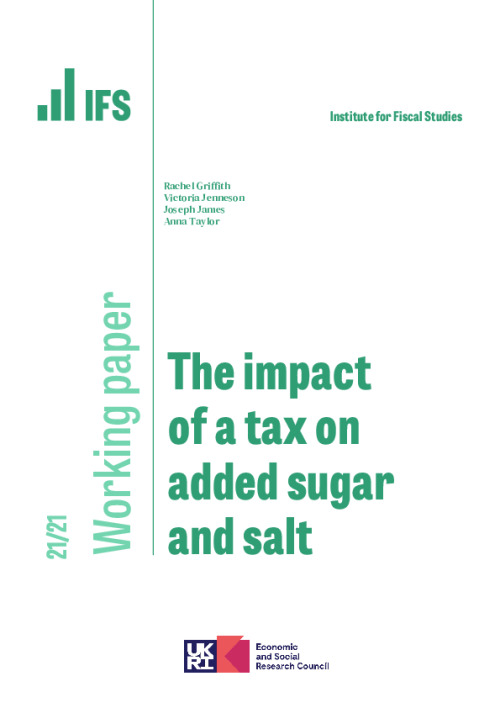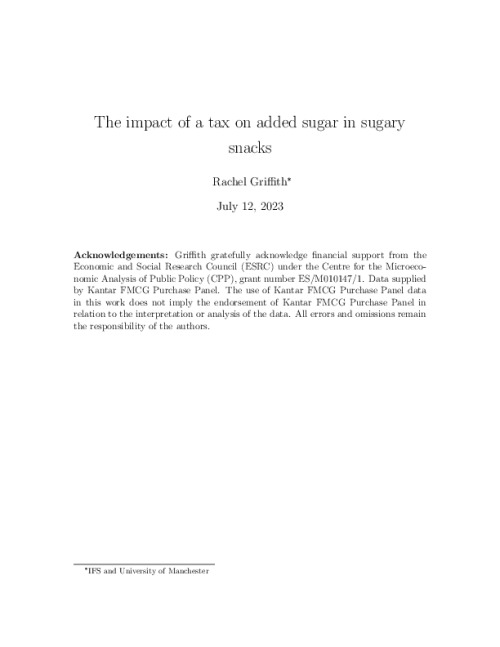Sugary drinks taxes have been implemented around the world and governments around the world are considering extending these taxes to address concerns about rising obesity.
We demonstrate the range of impacts a tax on added sugar and salt could have on purchases of food at home and out of the home in the UK. The impact will depend on how firms and consumers respond. There is considerable uncertainty about each of these. Therefore we take a very robust approach and consider scenarios that cover the full range of realistic possible levels of response – from very responsive firms and consumers to non-responsive firms and consumers, and everything in between. Fully responsive firms would reformulate products to reduce sugar and salt (we assume the maximum reformulation would be to targets set by Public Health England, PHE). Fully responsive consumers would substitute away from products in proportion to the increase in price, and not increase purchases of added sugar or salt on other products. In the remainder of this paper we describe the data in more detail (section 2), show the impact of taxes on prices (section 3), the impact on sugar and salt purchases (section 4), including by age, and show the implied health benefits from the Department of Health and Social Care calorie model and analysis by researchers at the The London School of Hygiene and Tropical Medicine (LSHTM) (section 5).
Appendices show details on PHE reformulation targets (Appendix A), the results using the larger sample of data on home purchases (Appendix B), and we describe the methods and calculations used (Appendix C) .












